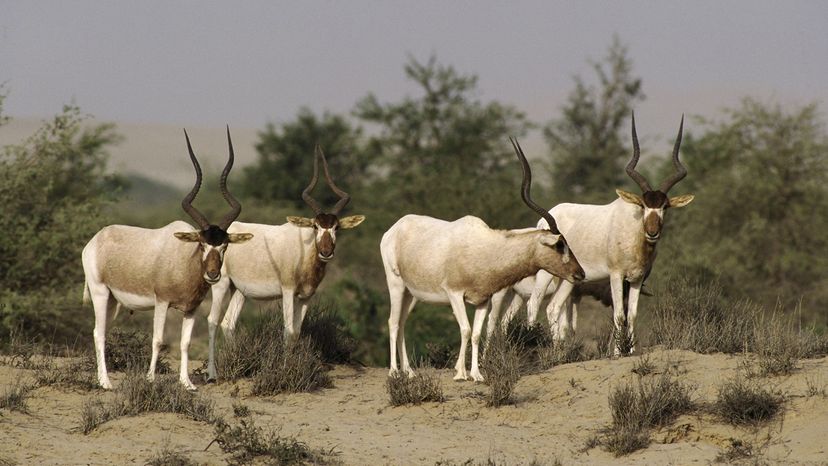Living in the Sahara Desert presents numerous challenges for the addax population. The extreme temperatures, scarcity of water and the threat of predators make survival a constant battle for these resilient antelopes.
Extreme Heat and Thermoregulation
The Sahara Desert is known for its scorching temperatures, reaching highs of up to 122°F (50°C) during the day. To cope with these extreme conditions, the addax employs several thermoregulation strategies.
During the hottest parts of the day, the addax seeks shade, and it rests in sand hollows to dissipate body heat. Its reflective coat color helps reflect radiant heat, while the length and density of the coat provide insulation and prevent excessive heat absorption.
Only when its body temperature rises significantly does the addax resort to cooling itself by panting through its nasal passages.
Predation and Defense Mechanisms
Predators pose a significant threat to the addax population in the Sahara Desert. Wild animals such as lions, cheetahs, African wild dogs and leopards prey on these antelopes — and so do humans, unfortunately. The addax's slow movements and lack of speed make them vulnerable targets.
However, the addax has developed some defense mechanisms to protect itself. Individuals may charge if they feel threatened, although aggression is not their typical behavior.
Habitat Loss and Human Impact
Human activities, such as unregulated hunting and habitat destruction, have had a severe impact on addax populations in the Sahara Desert. The addax was once abundant throughout the region but has now been reduced to small, isolated populations.
Uncontrolled hunting for their valuable meat and skin, as well as competition with cattle for grazing lands, has led to a significant decline in addax numbers. The antelope's slow speed and vulnerability to motorized vehicles have made them easy targets for poachers.
Conservation Efforts and Reintroduction Programs
Since 2000, the International Union for Conservation of Nature and Natural Resources (IUCN) has assigned a classification of "critically endangered" to the addax. Recognizing the critical status of the addax, conservation organizations and governments have implemented various initiatives to protect and restore the species.
Efforts to breed addax in captivity through programs such as the Species Survival Plan (SSP) have been successful in maintaining a captive population and ensuring genetic diversity. Reintroduction programs have also been implemented in secure, protected areas within the addax's native range.
In Tunisia and Morocco, reintroduction efforts have shown promising results, with small populations being established in these regions. However, the challenges of habitat restoration and protection remain crucial for the long-term survival of the addax in the wild.
We created this article in conjunction with AI technology, then made sure it was fact-checked and edited by a HowStuffWorks editor.


